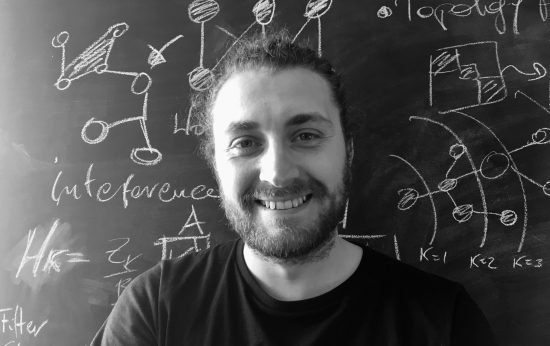We spoke with Dr Giovanni Petri about the research, the feedback the paper received, and his experience publishing in our journal.

Four years ago, a paper published in Journal of the Royal Society Interface reported a novel computational topological technique to uncover differences in the brain’s mesoscopic functional organization during normal and psychedelic states. It has since become one of the journal’s most downloaded research articles, and it garnered a lot of success in both the media and the field. We spoke with Dr Giovanni Petri about the research, the feedback the paper received, and his experience publishing in our journal.
Tell us about yourself and your research.
I am a theoretical physicist that shortly after graduating decided that complex systems – in the broadest sense – were more intriguing than cosmology. I fell in love with the idea of high-order interactions, of emergent properties etc. I therefore ended up doing a PhD on complex networks at Imperial College London, under the supervision of Professor Henrik Jensen and Professor John Polak.
Theoretical approaches have always fascinated me, and the ISI Foundation in Turin offered me an opportunity to pursue this as a Research Leader, working at the interface between complex systems and algebraic topology. Nowadays, my research spans the analysis of neuroimaging data with topological techniques, the formalization of cognitive control models with tools of statistical mechanics and network theory, and the study of the predictability of socio-technical systems.
What does your paper tell us?
The paper tells us that the ‘shape’ of functional connections – imagine this as one of those fancy 3D visualizations – carries important and novel information about the mode of information processing in the brain.
In particular, we adopted a technique from algebraic topology called persistent homology, which is able to characterise the shape of data in arbitrary dimensions. Using this representation, we found that altered states of consciousness induced by psilocybin – and likely, other psychedelics – stem from very different patterns of information integration with respect to the normal state.
Were there any surprising observations?
Yes. The statistics in placebo and psilocybin conditions were pretty much the same. We could not really find meaningful or interpretable differences at the level of the statistics of the topological (or network) observables we were looking at.
BUT! When we unfolded the statistics of the holes and localized them back on the original functional network, it then became apparent that the configuration in which correlations are organized is very different in the two conditions: psilocybin leads to a radically different, and much more widespread, integration across physiological functional modules.
This led us to speculate about the implications of such reorganization. For example, a common self-reported effect of psilocybin is synaesthesia – the phenomenon where you see odours and smell colours – and we wondered whether the collapse of the hierarchy of functional connections under psilocybin might be part of the origin of these phenomena.
What feedback did your paper receive after publication?
It was huge. We did not really expect anything like it. The paper immediately received a lot of attention from a wide range of media, both scientific and mainstream. This was also thanks to the work of the Press Office at The Royal Society.
We are still incredulous about the Altmetric scores, and the 150k download milestone is vertiginous. However, this experience also made us acutely aware of the difficulty of properly communicating a complex scientific message to a general audience, and avoiding easy distortions or emerging narratives. As you can imagine, having psychedelics in the paper easily led to misinterpretations and distorted narratives.
More seriously, we received a lot of interest and questions from other researchers in the field, about how they could use and interpret the same techniques in their work. Even more importantly, I think this was one of the papers that most helped popularize and solidify the notion that higher-order representations are relevant for understanding the brain and complex systems in general.
What is the future for your research?
From the biomarking point of view, I am expanding this line of research to include the topological characterization of a wide range of altered states, both due to drugs, pathologies, and ageing. For example, we are now looking at the topological functional structure of individuals affected by bipolar disorder, and how lithium helps to normalize it.
From a more fundamental point of view, I think one important future direction is to investigate whether these topological observables are fundamental to how the brain works. There is some evidence of the topological nature of grid cells’ organization, and of the spatial maps built by our hippocampus.
We (and others) provided evidence from neuroimaging data that topological observables are meaningful at the whole-brain level. However, the jury is still out on whether, and how, topological coding schemes are relevant from micro- to macro-scales, e.g. for higher cognitive functions.
What was your overall experience like publishing in Interface?
I could say that I appreciated the rigor of the review process. However, I think a fairer representation is “no pain, no gain”.
For this paper, we received the single longest referee report I have ever seen or heard of (12 pages!). Anecdotes aside, I think the process was very good, quite quick, and it did significantly improve the quality of the manuscript. I think this goes to show the extremely high standards of the journal.
Keep up to date with all the latest research and reviews published in Interface by signing up for table of contents alerts.




